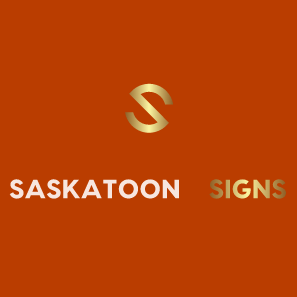
When it comes to creating unique and eye-catching signs, the cutting technique used in the production process plays a crucial role. In the world of signage, two popular methods stand out: custom (contour and halo) cut and die cut. Understanding the differences between these techniques and their applications can help you choose the right style for your signage needs.
Custom Cut Signage: Flexibility and Precision
Custom cut, also known as contour cut, involves cutting a sign to a specific shape or along the exact edge of a design. This technique is achieved using a digital cutter or router, ensuring a precise cut along the design’s edge. Custom cut signs can create virtually any shape or design, with the only limitation being that any cut portion must be at least 1/4” in width to maintain the sign’s structural integrity.
Custom with Border (Halo Cut)
Custom with border, previously known as halo cut, is similar to custom cut but includes a border around the edges of the sign. This border, typically 1/4” – 1/2” thick, provides added strength, especially for signs with intricate designs. It creates a ‘bubble effect’ around the outside of the sign, making it ideal for designs with areas smaller than 1/4”.
Die Cut Signage: Decorative and Distinct
Die cutting is a different process altogether, often used for decorative purposes. It can be likened to using a cookie cutter to make exact shapes in a material. A stenciled design, made from aluminum (the die), is pressed on a material to punch out shapes and designs. This technique is best suited for flat substrates like paper, thin metal, and plastics, and is commonly used for large-quantity jobs due to its ability to cut the same shape at high speeds.
Applications of Die Cut
Die cut products are known for their unique display and decorative flair. They are commonly used for decorative envelopes, letterhead, metal stencils, vinyl stickers, and leather products. However, for typical business or homeowner use, signage is not usually designed with portions cut out from the center of the material.
Making the Right Choice for Your Sign
Choosing between custom cut and die cut depends on your design preferences and the intricacy of your sign. For detailed designs, custom with borders is ideal to eliminate excess material without compromising durability. Simple designs can be effectively achieved with custom cuts, offering a clean, streamlined appearance.
Considerations for Signage
When selecting your sign, consider the following:
- Design Complexity: More intricate designs may benefit from custom with borders, while simpler designs can use custom cuts.
- Material: The choice of material can influence the cutting technique. Softer materials like paper may not be suitable for die cutting.
- Purpose: Consider the purpose of your sign. If it’s for decorative purposes, die cutting might be suitable. For more functional signs like illuminated signs or 3D letter signs, custom cut or custom with borders would be more appropriate.
Partnering with a Professional Sign Maker
For businesses in Saskatoon, working with a professional sign printing company can help in making the right choice. A professional can guide you through the design process, material selection, and suggest the best cutting technique for your specific needs.
Lightbox Signs Demystified: A Beginner’s Guide
Lightbox signs are a popular choice for businesses looking to make their name and graphics…
Building Signs Set the Stage for Memorable First Impressions
In the world of business, first impressions are crucial. They are the initial step in…
Ground Signs Uncovered: Costs and Essential Details
Ground signs are a key component of any business’s outdoor advertising strategy. They are visible…
